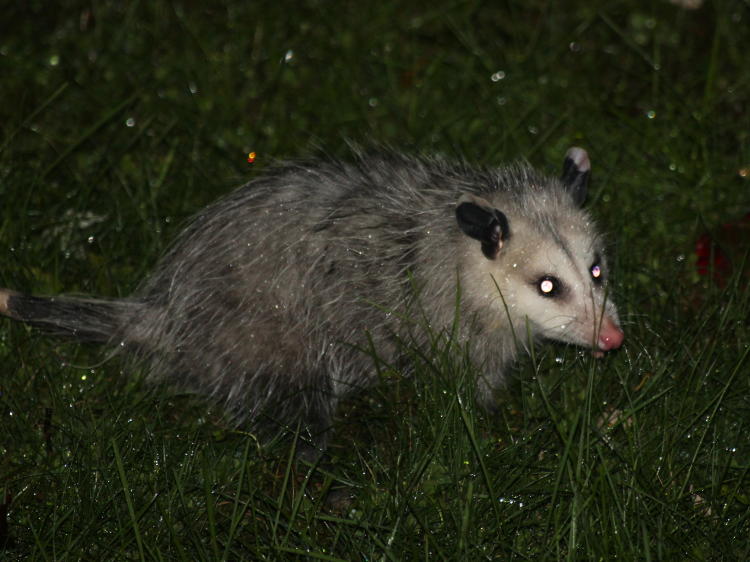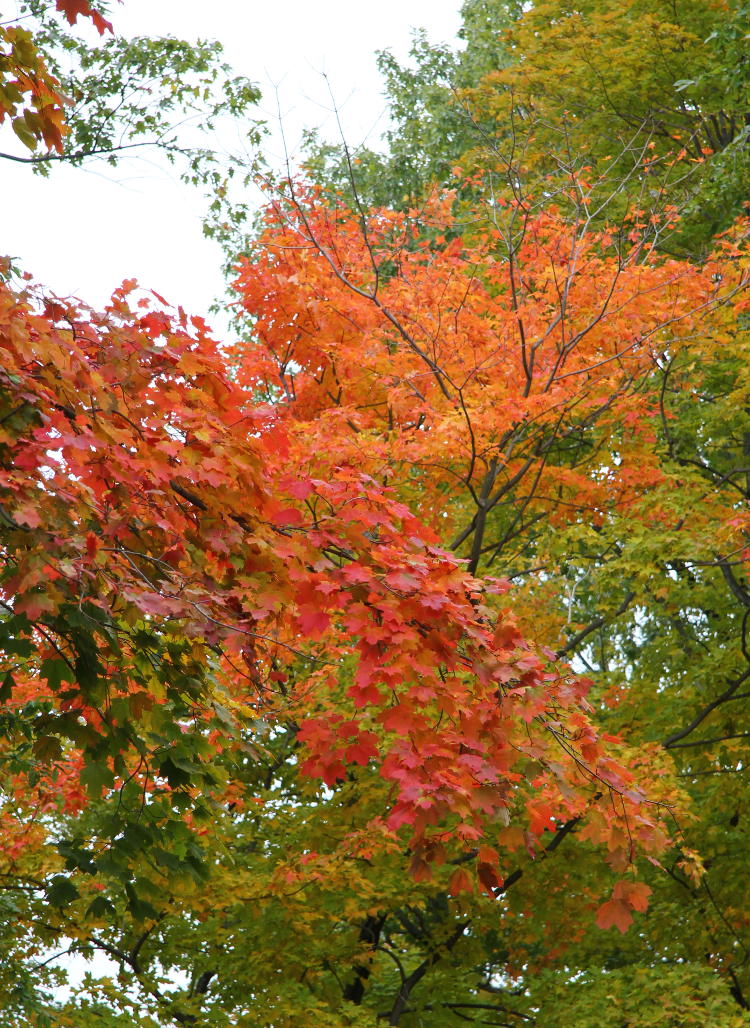
I mentioned in the most recent podcast about going to Ohio for a few days, and I’d gotten back just over a week ago as I type this. It was a “help out friends” type of trip, but we ended up doing more than just the planned tasks. We had intended to do a small side trip, but the weather wasn’t cooperative, so (to indulge me a bit,) we hit a small local park instead, where I could take advantage of the autumn colors that were developing apace up there. They were actually running late this year, since they usually peaked third week in October or so and hadn’t yet during my trip, but I could still do the selective thing and fired off a few frames in the overcast conditions.
I’ve mentioned before that this is how I often pursue them, and the truth is, it can be very hard to find a broad landscape where the colors are all ‘popping’ – different species of tree all tend to change colors at different times, so it takes finding a collection of species about on the same schedule, yet different enough to provide a variety of color, and this really doesn’t occur in many places at all. Just to illustrate, I include this image across a small valley, showing how sporadic the bursts of color often are.

So, you go in closer and choose the bits that dominate the frame and give everyone the impression that the whole region is colorful (unless you’re dumb enough to tell them that it isn’t or, much worse, actually show them.) Overall, however, there were more of the species of trees that do get pretty colorful than I normally see around here, and the colors were notably vibrant, so this brief trip was enough to provide a pleasant little selection of images, more than I believed I was likely to get.
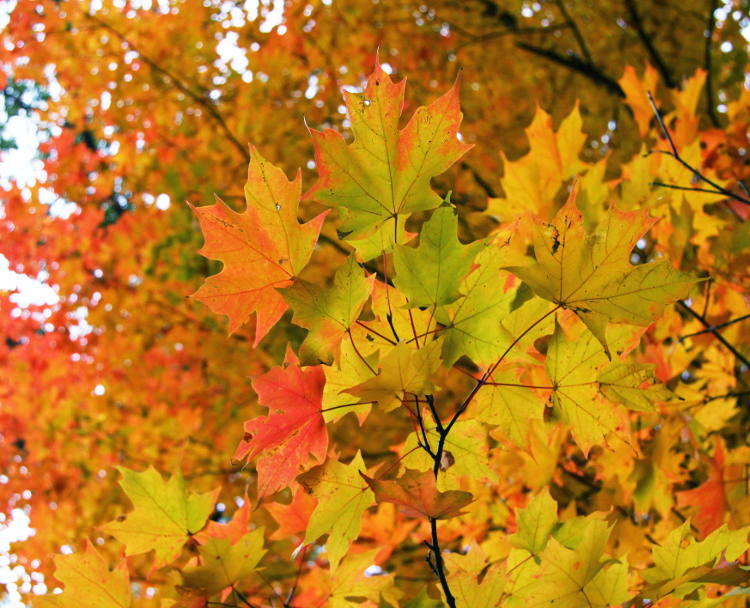
It’s long been my suspicion that one of the secondary appeals of falls colors (following distantly behind the vividness of course) is the depth that they provide, the distinction between different species of trees and different distances, which often disappear in two-dimensional photos – see the third photo on this page for my prime example of this, because you can imagine that, when everything is the same general shade of green, you have far less of a distance and depth effect. So when the leaves are all the same color, no matter how bright, the depth can still be lost. To combat this, I went in close to some low-level branches and used a short depth-of-field to blur out the more distant portions of the same tree, creating some subtle distinctions between them. And of course, showed the range of colors even within individual leaves.

At times you might get lucky and have a wide enough variety of species close together to produce a little pastiche on the ground (places where the wind eddies can help a lot,) so even when the trees turn and then drop their leaves at differing times, you can still capture their colors together. And my friend will vouch for this being exactly how they were found, because he was noting how selective I was being when composing.
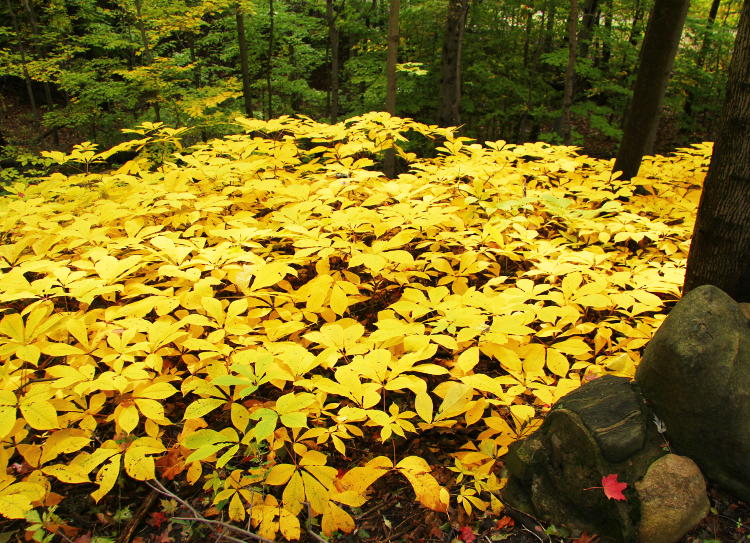
I don’t know what kind of plant this is – it looks a lot like something that we have here in central NC, but I’ve never seen such colors from it, so either it’s different, or my timing normally sucks. Either way, they were brilliant yellow, a nice patch of sunshine on the cloudy day (“My girl, my girl, my girl, talking ’bout…”) and the red leaf was included just as an accent. Had it fallen and draped across any of the yellow leaves, I would have been all over that natural composition.
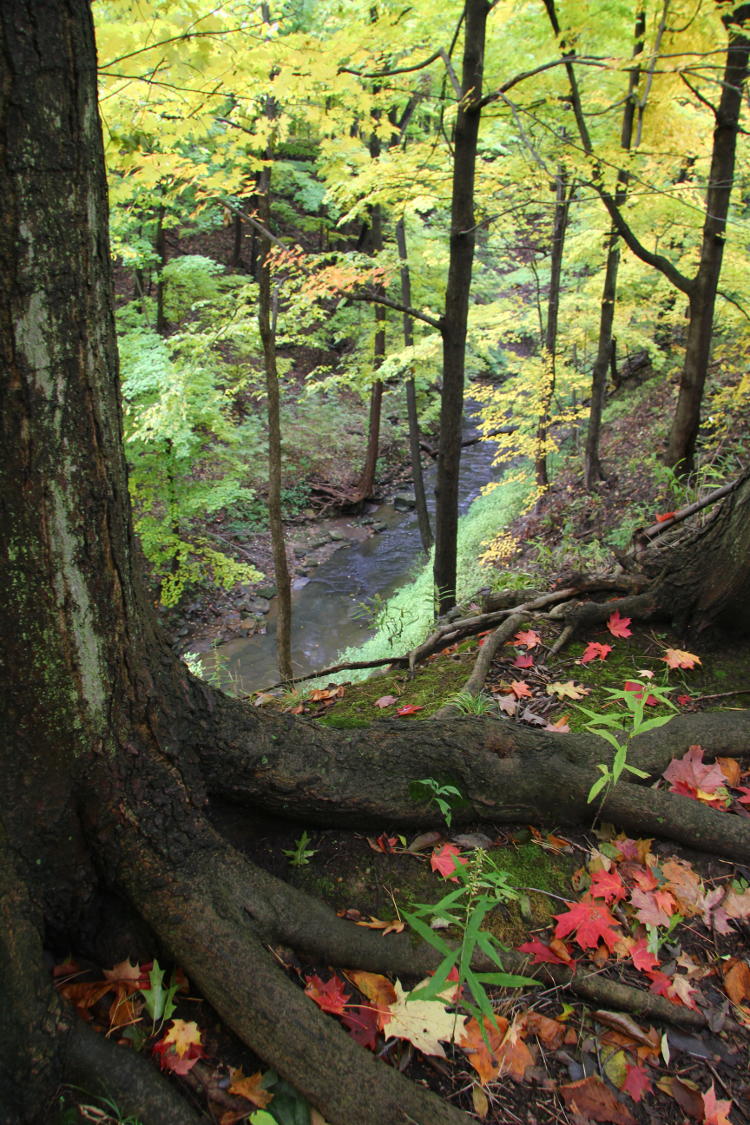
There was a little brook down there and, as can be seen here, we were well above it on the trails, and never found the way down to it. Well, the easy way, since a ‘path’ can be seen right here in the shot, but one we weren’t inclined to take. Sure, yeah, go ahead, harp about how a real nature photographer would have tackled that slope, feel free. I was game, but I was with a normie. I was being considerate. Get bent.
But yeah, notice how some of the trees are just starting to turn, like the milk in the fridge a couple days past the date on the carton. We were lucky to have a variety to work with, barely interspersed at all with spindly threadbare longneedle pines like, you know, some states…
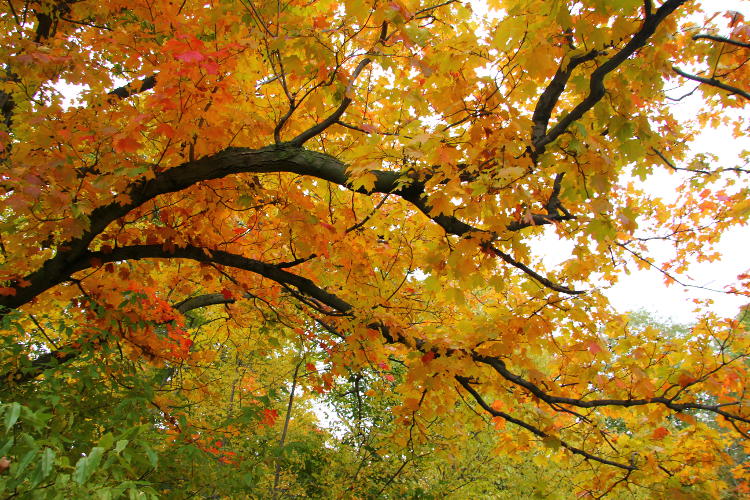
This is probably my favorite from the trip, because of the nice lines of the boughs and the colors. And I’ve said this many times before too, but it’s worth repeating: bright sunlight would not have helped this at all, and likely would have made it far less impressive, because color subtleties come up much better with low-contrast, muted light like haze to overcast. Now, early morning with a clear blue sky might have been an improvement over this, but generally, sunlight isn’t always a friend to colorful photos.
Now, I will diverge from topic for a bit just to include a couple of other photos. One rainy evening, I noticed one of their cats staring intently out the front window, and I suspected it was doing the whole “cats staring at ghosts” routine (though this was still a few days before Halloween.) But on glancing out myself, a shape in the front yard just a few meters from their door could easily be seen, and I spent a moment or so of, “What the hell is that?” before it became apparent. This was partially because I haven’t seen one in years – for some reason, there are very few to be found in this neck of the woods. They probably hate longneedle pines. And I need to point out that this was in a crowded suburb of Cleveland – not exactly a deepwoods environment.
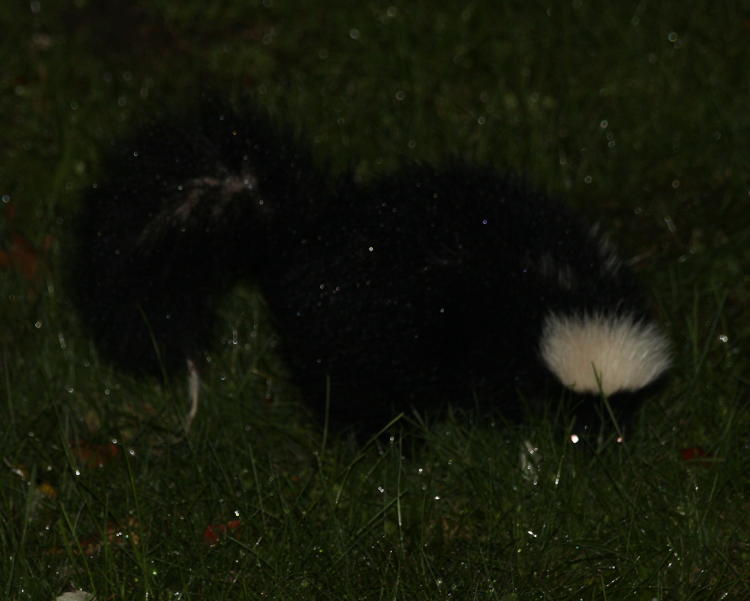
This is a skunk, despite the odd coloration – most people expect one of two stripes running longitudinally, but there is a very wide variety of patterns that can be found within species, and a surprising number of species. As such, I’m going to tentatively identify this as a striped skunk (Mephitis mephitis,) mostly because they’re the most common in the region, but don’t go alerting Wikipedia. There was just the one patch of white on the head, with a tiny stripe between the eyes, and no markings on the tail whatsoever; since it was facing away from me when I first saw it, this made it a little more confusing. Plus it was dark. Dark enough, in fact, that the image is a little out of focus because I was focusing manually and didn’t have anything to lock onto easily.
Due to its proximity to the house, I was initially reluctant to fire off the flash (which was the rinky-dink on-camera flash tube of the Canon T2i) because of the chance that I’d startle it. Skunks, on the whole, are pretty mellow cusses, confident in the knowledge that most things will avoid them, but if I was wrong and it fired off a blast, their house would be rather… aromatic for days. But then one of my friends, viewing the forager while we both stood in the open doorway, banged loudly on the doorframe and only provoked a momentary lift of the tail, without even a pause in the skunk’s industrious digging for grubs, so I figured the camera wouldn’t bother it. And indeed, it twitched a little at the first flash and ignored all subsequent ones. Lots of people will tell you that flash photography will startle animals, but they see lightning and the sudden appearance of cars over the hill – camera flashes really don’t register much at all with them.
As we watched, a juvenile Virginia opossum (Didelphis virginiana, and yes I’m confident in that one) also appeared in the yard, between the skunk and us in the doorway, so I fired off a couple of shots of that, too. It wandered more in the skunk’s direction and received its own tail-lift in warning, which sent it scurrying off in another direction, unwilling to contest territory. Meanwhile, our quiet conversing in the open door was having no effect on either of them, so yeah, urbanized wildlife.
